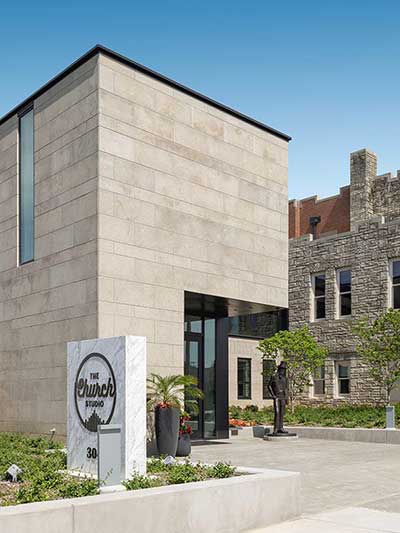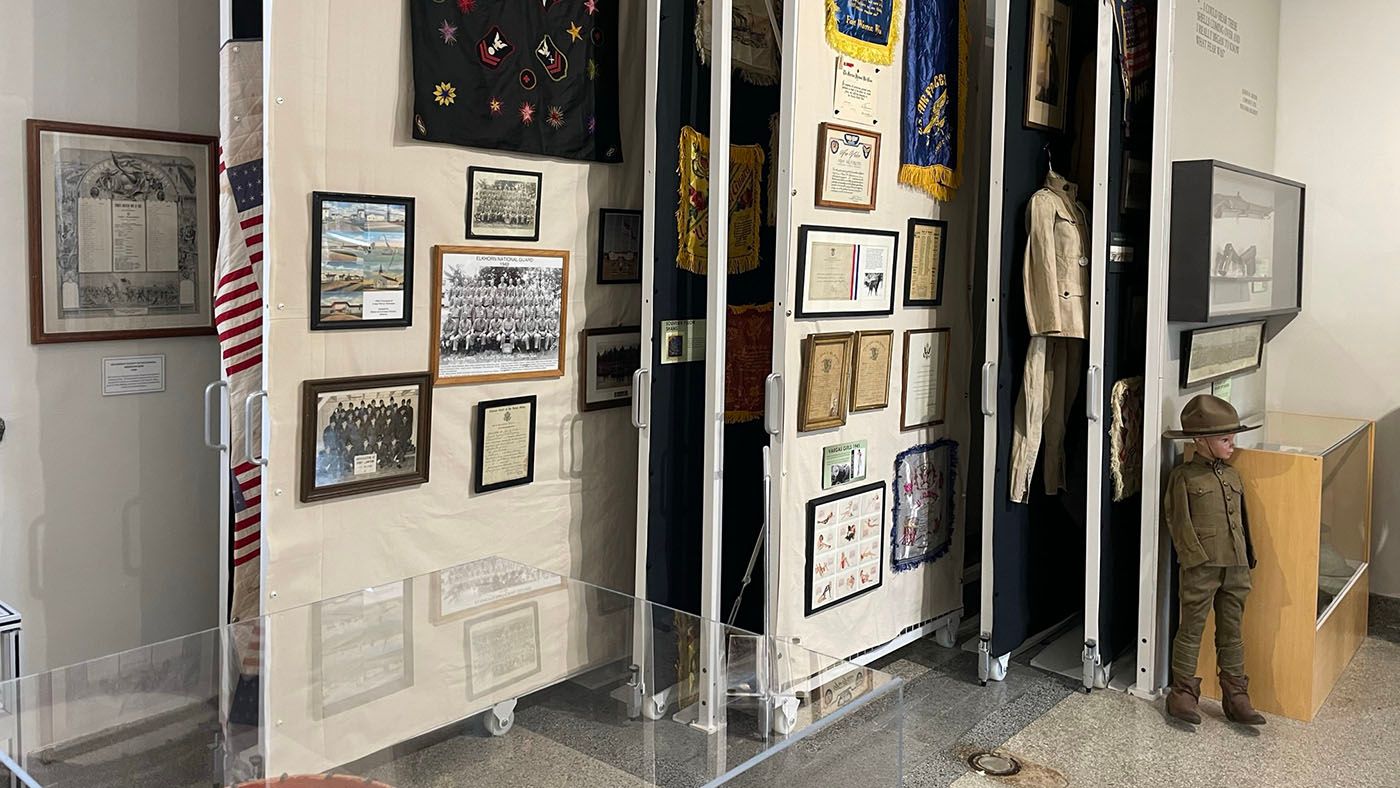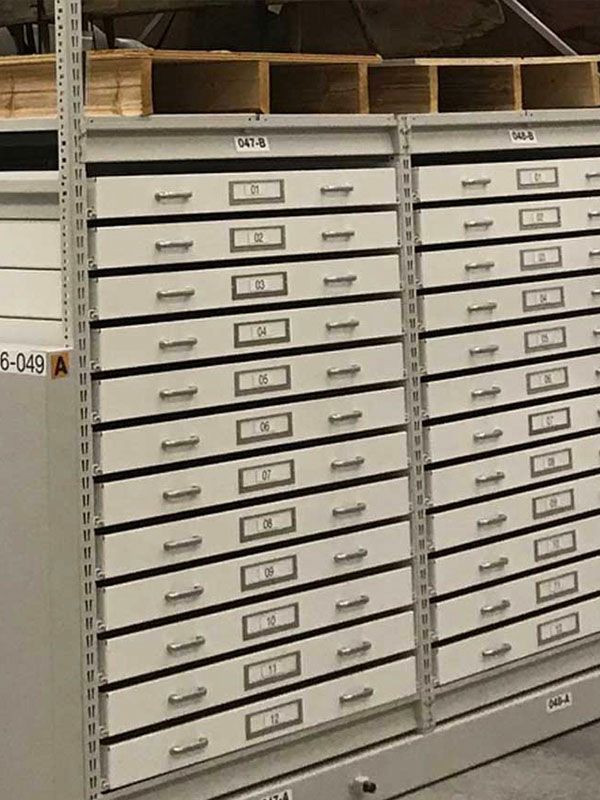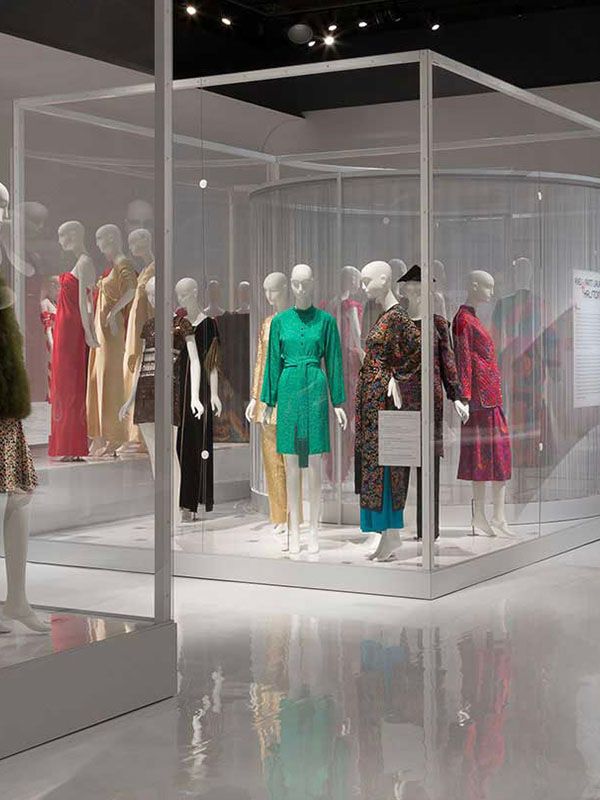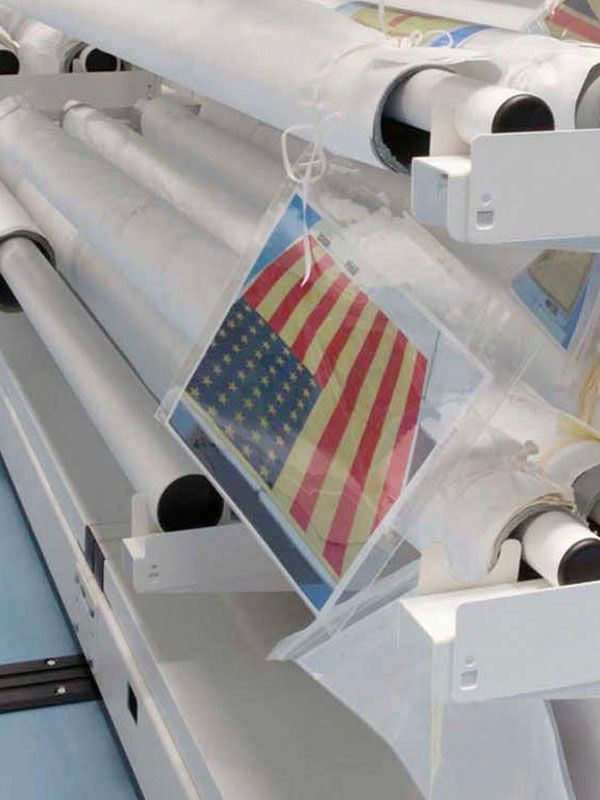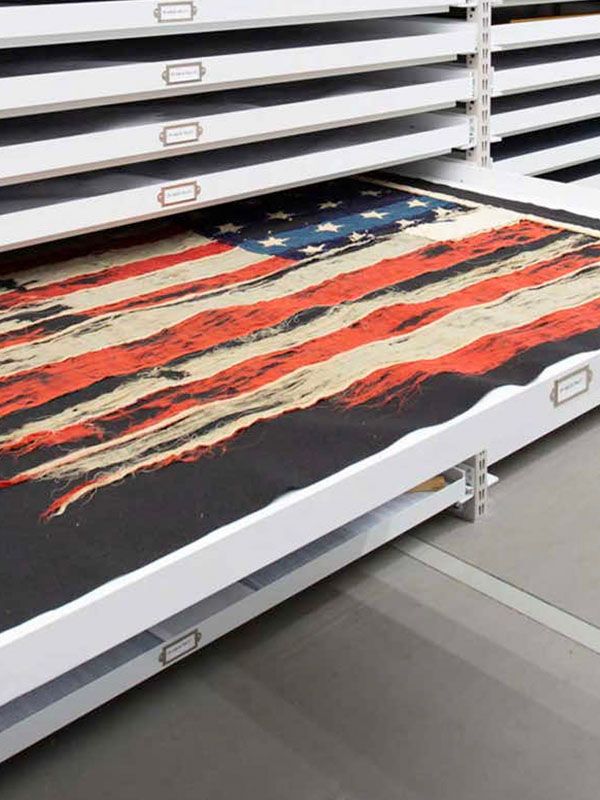Keyport, Washington
Torpedoes Get Moving with Heavy Duty Storage Solution
Faced with storing 6,000 pound torpedoes, the Naval Undersea Museum had to find a moveable heavy duty storage solution. Go behind the senses with Spacesaver.
The Weight of a Large Collection
The Naval Undersea Museum in Keyport, Washington has a history that dates back to 1800. The museum is part of the Naval History and Heritage Command (NHHC), founded when President John Adams founded the Navy Department Library. Today the NHHC is comprised of twelve museums, including the Naval Undersea Museum, and is responsible for preserving, analyzing, and raising awareness of United States Naval history.
"We plan to expand more and more."
- Jennifer Heinzelman, Collections Manager & Registrar Naval Undersea Museum
With such an extensive history, it’s not surprising that the museum had some unique items to store – from art to baseball caps to antique diving gear – but they faced one particularly unique challenge. The museum is home to a collection of torpedoes, some weighing upwards of 6,000 pounds. The collection includes many types of torpedoes ranging from modern Mk 48 and Mk 50s to torpedo tubes from the USS Tecumseh, and even Howell Torpedoes, which were the first self-propelled torpedoes designed by the U.S. in 1870.

Download Our Museum Storage Lookbook
From torpedoes to whale bones to art, we know the ins and outs of museum storage. When it comes to heavy-duty storage, we have the experience and know-how to get the job done.
Download Our Museum Storage Lookbook
From torpedoes to whale bones to art, we know the ins and outs of museum storage. When it comes to heavy-duty storage, we have the experience and know-how to get the job done.


In 1870, the United States designed its first self-propelled torpedo, this is now housed in the Naval Undersea Museum
Centuries of History, Limited Space
These incredible artifacts are a great resource for the citizens, researchers, and leaders, but as more items were added, the museum struggled to keep up with storage. With a fixed amount of storage space and an ever-growing collection of items to preserve, space was at a premium. Artifacts were archived on old, rusty, conventional industrial shelving which exposed them to dust, and left them vulnerable to damage.

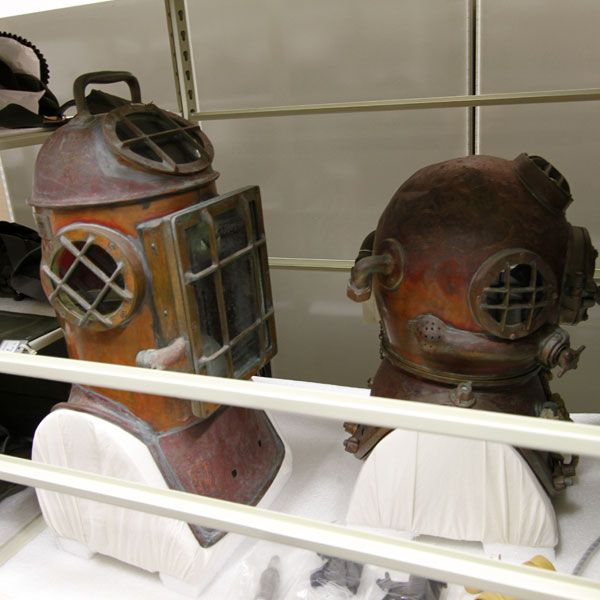
The shelves holding the massive torpedoes were not seismic protected, which posed the risk of both employee injury and torpedo damage in an area with above-average seismic activity. The narrow aisles between shelves made it almost impossible to maneuver a forklift around the area, not to mention trying to maneuver a torpedo on the forklift. With plans on the horizon for storing more sea mines, submersibles, and submarine consoles, the Naval Undersea Museum thought their only option was adding offsite storage, but the cost of building or leasing another facility was a major issue.
Jennifer Heinzelman, the Collections Manager and Registrar at the museum, was concerned with the dwindling space and the quality of the shelving being used for their artifacts. In search of a heavy duty storage solution that could handle their unique needs, she reached out to a Spacesaver distributor in the area. Having worked in the industry for many years, the Spacesaver distributor recognized the safety issues the museum faced, but knew there was a way to expand storage without adding a new facility.
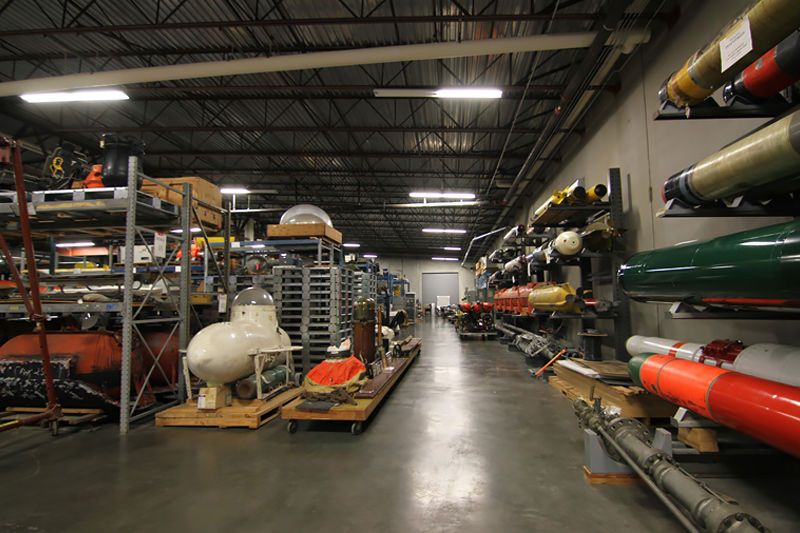
“By installing the new heavy duty storage, the museum can now store 110 torpedoes compared to just 66 on the old shelves.”
Archive, Art and Object Storage on the Move
For the smaller artifacts, the local distributor recommended installing a standard high-density mobile shelving system. The shelves securely hold smaller artifacts and were mounted on mobile carriages to save space. With a simple turn of a mechanical assist wheel, the shelves slide apart to reveal aisles for easy access. Additional mobile shelves were added for film and book archives, and mobile art racks were installed to house the museum’s 2D hanging art collection. Installing the more compact shelving created 60% more storage space in the storage and archive areas.
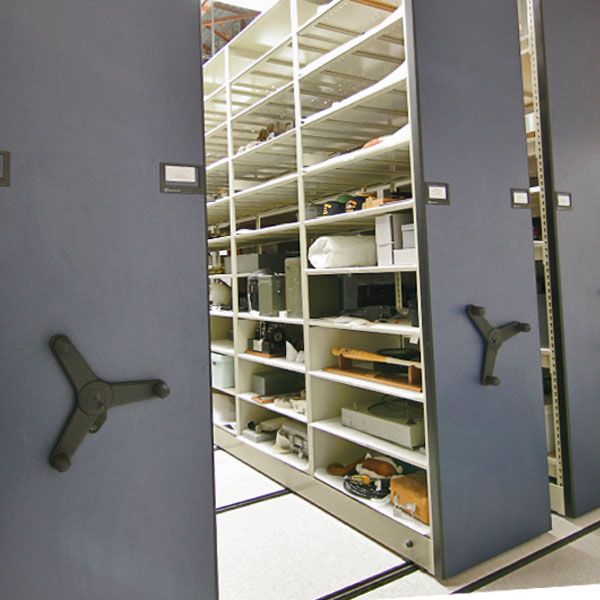
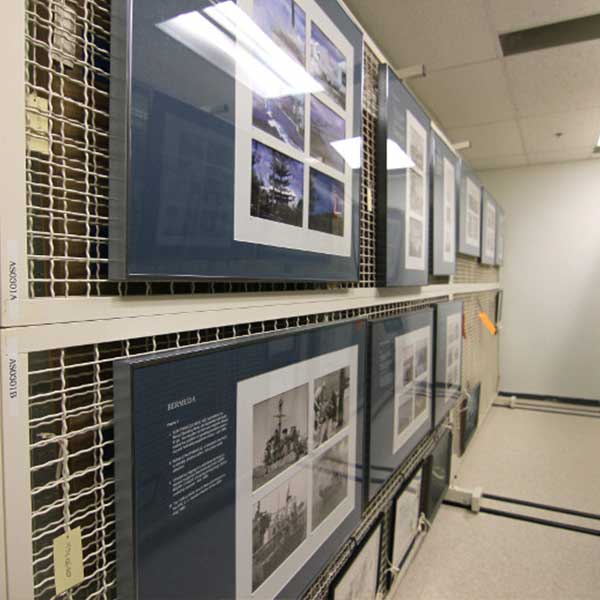
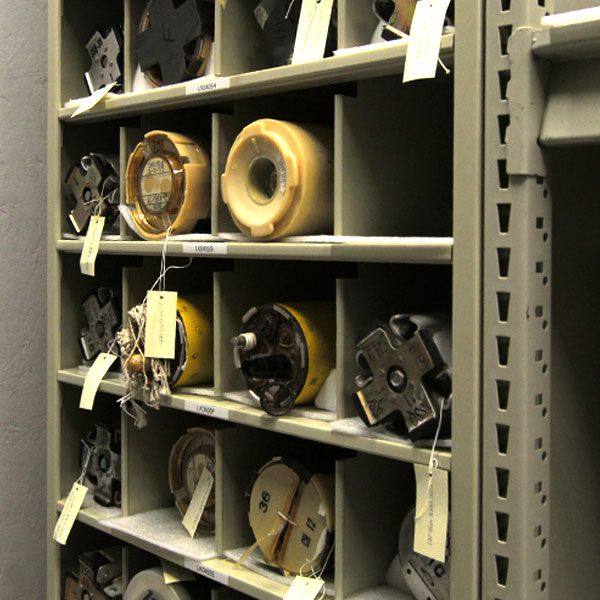
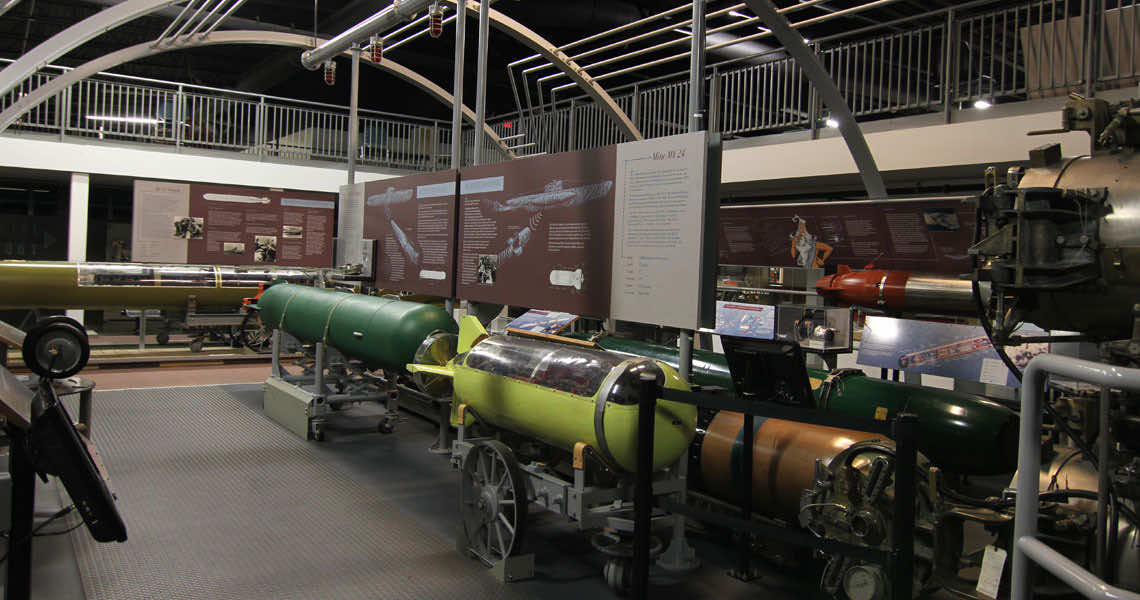
The Naval Undersea Museum houses 39,00 artifacts.
Making Room for More Torpedoes
The Naval Undersea Museum’s biggest heavy duty storage problem was also handled easily and efficiently with an ActivRAC 16 mobile racking system. In contrast to the old rusty static racking, the new ActivRAC system frees up space by eliminating permanent aisles. Racks are moved with a simple push of a button, and for added protection the aisles are equipped with safety systems. By installing the new heavy duty storage, the museum can now store 110 torpedoes compared to just 66 on the old shelves.
All of the storage systems provided an essential layer of protection with Spacesaver’s patented seismic protection technology, as well as fire prevention systems. The seismic protection combined with safety controls and the larger aisles made the environment much safer for employees. Forklifts and large items could easily be transported between storage and exhibits. The new storage system created enough excess space to accommodate future growth. The ActivRAC system was also created to be reconfigurable and allow for flat shelving if needed to store different shapes and sizes of items if needed. “We plan to expand more and more,” said Heinzelman – and thanks to a new heavy duty solution, their storage will be ready to preserve history for years to come.

